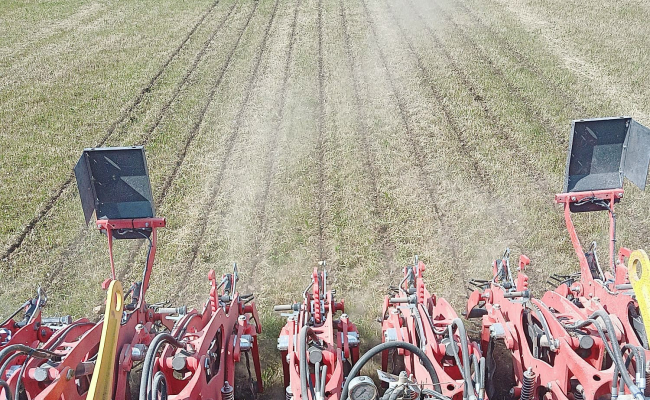It’s not all about the “rewilding” and carbon offsetting – its balance
There’s been a lot of talk in the press recently about “rewilding” where farmers fields are being used for tree planting for carbon offsetting schemes. Whilst we agree that tree planting is great, we plant 1000 trees each year on the farm (usually on the field borders and in the hedge lines) we have to also see the bigger picture. Sustainability isn’t all about carbon. As with all issues, you cannot look at one factor in isolation and focus solely on that. Whilst we obviously consider carbon important (we have our soil tested to see how much carbon is captured in it), we have to remember that things like biodiversity are also very important. Our farm supports wildlife and rare arable wildflower species because of the way the farm is managed. Blanket measures like tree planting without considering the location, geography and other environmental factors would mean our species rich habitats could be at risk. Plus, we are a working farm, not a conservation or research project so whilst we do research and conservation, that is not our sole purpose. We use regenerative farming practices to manage the farm, so it works for not just the environment, but also works as a business for us and our farm partners.
So, using the knowledge we’ve gained over the years we continue to grow crops on the farm and we graze cattle using a rotation system. We have four years of arable crops (winter oats, spring oats, spelt, winter wheat, spring barley, quinoa, linseed, beans, lentils, fodder beet) followed by four years of grass (for grazing and harvesting for silage). If the soil isn’t good enough to grow crops, we leave it as grassland for longer to increase the organic matter in the soil. Often, the grass isn’t just grass – it’s a herbal ley which is a mix of about 17 different species (cocksfoot, ryegrass, fescue etc) which not only increases biodiversity, it’s delicious for the cows! What we plant and when, how we move the animals and planning ahead is key for us. We don’t import expensive feeds in for the cows overwinter, we grow grass and store it as silage and we grow fodder beet for the cows to eat straight from the ground in the winter. We move the cows often daily (returning every 35 days) so that the soil isn’t trampled too much but equally, the cow poo fertilises the soil adequately. In spring we grow quinoa and linseed, in winter we grow oats and wheat based crops. These wheat crops are undersown with clover in may which means we can have grazing when the crops are small and then remove the grass to allow the crop to grow to its full height.
It's not a simple process, as you can see. It’s all planned but also weather dependant. Yes, tree planting across the whole estate would probably be easier but it would not be beneficial to the environment in the ways that seem to be currently promoted and we believe overstated in the press. As with everything, there are no quick fixes to sustainability but we believe that this more holistic approach to managing the land and working with nature is far better in the long run.

